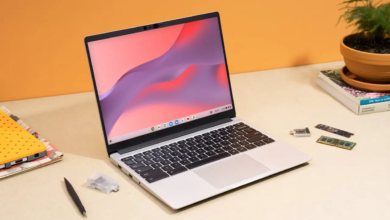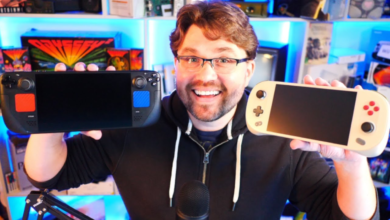Meta Quest Pro review: A next-gen headset for the VR

Design and fit
Meta smartly used a curved battery integrated into the back of the headset to manage the trade-off between power and comfort, eliminating the need for wires or a belt-mounted power cell. A headset that is incredibly simple to put on and wear is created when a plush forehead cushion and a convenient dial for adjusting the headband are combined. While IPD (interpapillary distance) adjustment is accomplished by merely shifting each eyepiece left and right as necessary, additional adjustments are offered by a little dial in front that modifies lens distance. All things considered, the setup is really simple, and because of the Quest Pro’s fit calibration feature, the headset will prompt you to make necessary adjustments if it detects that anything isn’t quite right. Then when There are speakers that enable spatial audio integrated into the arms of the headset when it comes to sound, but if you’d rather use your own headphones, there’s also a 3.5mm jack.
However, despite all the care Meta took to design a comfortable and balanced headset, the Quest Pro’s weight can occasionally be a problem. It’s possible that you won’t notice anything if you frequently enter and exit VR. With a weight of slightly more than a pound and a half, though, I found my forehead occasionally becoming a little painful during longer sessions. It usually sufficed to adjust how the Quest Pro sat on my head to release the tension. But I also wouldn’t be shocked if some folks experienced a mild headache after using this configuration for a while. I’d also be remiss if I didn’t bring up the perspiration issue, as depending on your activities, the leather forehead pad may become damp On occasion, I ponder whether active cooling is really necessary for VR headsets. Heck, developers might even employ fans to simulate a breeze in a video game or film, which could be really pleasant.
Controllers
The new Touch Pro Controllers make up a sizable portion of the headset’s accessory kit. The basic design of Meta is identical to that of the Quest 2’s. The main difference this time is that the controllers now have built-in sensors for both hand and finger tracking instead of depending on a large light ring with LEDs. Not only does this simplify their design, but I also noticed an improvement in responsiveness and accuracy.
The controllers’ greatly enhanced haptics also add to the realism, especially in apps where you can turn them over and use the back as a stylus. For instance, brushes in Painting VR use a range of rumbles and sensations to imply size and weight. The overall effect is similar to HD Rumble on the Joy-Con of the Nintendo Switch, but with even better force feedback fidelity.
I also like how the rubberized grips on the controller have a subtle texture; it makes them feel secure even when you’re in the thick of a virtual conflict. The hand straps Valve utilizes on the Index controllers, which let you swiftly swap between buttons and finger or hand motions without having to set the controllers down, are, nevertheless, something I kind of miss.
General performance and apps
Of course, when technology and software come together, real magic happens, and the Quest Pro, at least initially, provides some really astounding performance. The excellent optics of the headset almost eliminate all traces of the screen door effect. Also highly readable, I had no issue writing a portion of this evaluation in virtual reality. The combination of Quest Pro’s eye and facial tracking to produce more realistic expressions on my avatar may have convinced my coworker Cherlyn Low to spend more time in VR when she visited my virtual office in Horizon Workrooms. Additionally, for me, the availability of spatial audio makes using VR less like floating in a simulation and more like genuinely sharing an office with another person. So even though Cherlyn was sick that day, we were still able to work together without me running the risk of contracting her illness, and in a weird, nerdy way, it felt kind of nice.
Additionally, many popular features like Meta’s scene understanding simply sort of function, at least most of the time. In order to avoid having to constantly redraw the boundaries for my room-scale guardian, I discovered that the Quest Pro was rather adept at automatically detecting the locations of floors and walls. To make it simpler to build up a virtual workplace that resembles my actual workspace, it even automatically detected some objects, such as my desk (and remembered them in subsequent sessions). Though I did observe that things didn’t always operate as well in spaces that were more congested.
The full-color passthrough on the Quest Pro is also pretty stunning. Do not misunderstand; it is still inferior than using your eyes to move across space. However, it’s accurate enough for me to move from room to room to get a glass of water without taking off the Quest Pro or running into anything.
I loved using applications like Cubism to arrange blocks to solve three-dimensional puzzles, and I Expect You to Die allowed me to fulfil a boyhood dream of becoming a secret spy. And in Tribe XR, I was able to practice mixing and beat-matching fundamentals while virtually employing the same tools that professional DJs do. It is much simpler to switch between apps and maintain connectivity while using the Quest Pro’s desktop mode thanks to the enhanced three-window multitasking. Or, it would be if 2D apps were more widely available.
And that kind of gets me to the main problem with the Quest Pro: there aren’t many apps that have been tuned to fully utilize its increased capabilities. While significant features like Slack are allegedly on the way, there isn’t even support for messaging apps like WhatsApp for traditional 2D apps. Therefore, if you’re like me and rarely use Facebook Messenger or Instagram, things could still seem a little disjointed.
The fact that there are now so few apps in the store’s Quest Pro category may be more telling. Games like Nanomesa, which allows you to explore molecules in virtual reality, are incredibly cool and fascinating, but rather specialized. I don’t know about you, but even though I studied biology in college, I don’t really spend a lot of time in my leisure time staring at different compounds and conformations.
This was somewhat anticipated because it would take some time for developers to utilise the new features of the Quest Pro. Without a flagship game or app like Breath of the Wild to match with it, this headgear has a similar launch-day feel to the Nintendo Switch. Yes, the Pro is entirely backward compatible with previous software, so you can go back and enjoy all the old Quest apps. However, if you’re going to spend $1,500 on a VR gear, you kind of want to get lost in it for at least a month.
The other issue I have is that although though many of the more expensive features work remarkably well, many of the smaller details look unfinished. For instance, Cherlynn finally managed to visit my workplace in the Horizon Workrooms after almost an hour of trying. She had to go between her headset, phone, and laptop to discover where to accept my invitation because, in VR, you can’t just give a link to a meeting as you would in Zoom. And I had to move back to my fake chair at my fake desk simply to upload something before having to move back to the whiteboard again to pin it when I wanted to upload an image to pin on my virtual whiteboard Even with my having already set up Meta’s Remote Desktop software, that is just complicated. While Meta claims to be working on it, there are other minor annoyances like being restricted to a single virtual desktop when connected to a Windows PC while Mac users get three (which, by the way, you can’t even move right now).
Charging and accessories
Although Meta doesn’t make any official battery life promises for the Quest Pro, I’ve discovered that, depending on the use case, you can expect between two and a half and three hours of usage time. The Quest Pro also comes with a six-foot USB-C cable you can use to keep it running if you need to be plugged in for extended periods of time. This is often longer than I want to stay in VR in a single sitting, though.
Other included extras include a protective silicone cover and two light blocks that magnetically attach to the side of the headset to reduce any outside disturbances. To get the full VR-dive experience, though, you’ll need to pay $50 for Meta’s Full Light Blocker. You might even choose a simple, low-tech approach like going into a dark room. You also receive two Quest Touch Pro controllers, two wrist bands, and stylus nibs that may be customized by attaching them to the bottom of the gamepads.
There is a pretty useful wireless charging dock that can hold the headset and the controllers to keep everything charged. It is true that it can be a little challenging at first to get the controllers to fit snugly in the dock. The trick is to hold them as if you were going to use them, then bend your wrists inward and drop them on the pier. You’ll hear a slight rumbling and watch the tiny indicator lights light up if you done it correctly. The controllers may also be charged using a special cable, but you only get one. Therefore, if you’re taking the Quest Pro on the road and leaving the dock at home, you’ll need to charge each controller separately.
Wrap-up
Look, trying to evaluate a next-generation VR headset is similar to judging a Mars colony by the spacecraft that transports you there: In the end, the Quest Pro serves as a platform for testing out posh new software that has not yet been developed. And at the moment, there just aren’t enough apps to determine whether that colony is a utopia or an Autoboot metropolis that has been destroyed and wasted after Megaton’s raids.
There are many positive aspects to the Quest Pro, at least in terms of hardware, if we can set aside that problem for the time being. It provides performance that is comparable to or, in some cases, even better than other high-end consumer headsets without the use of cables or a powerful PC. As a result of the abundance of sensors, you can quickly switch between controllers and hand motions, and the headset works exceptionally well as a standalone device. Along with really useful charging port, you get clear images, a simple design, and shockingly good battery life.
But for the time being, we’ll have to wait for the headset’s experiences and software to catch up, which is a lot to ask considering how much it costs to put on the goggles. You buy a Quest Pro on faith because you believe in the potential of virtual reality and where it might go in the not-too-distant future, at least for the time being. The Quest Pro thereby adds strength and finesse in a way that could change how people explore virtual worlds, while the Quest 2 can handle basic VR. The technology is available, but are you willing to spend a lot of money on a trial run?












One Comment